No content results match your keyword.
Content
You have successfully logged out.
Not registered yet?
AESCULAP SQ.LINE®
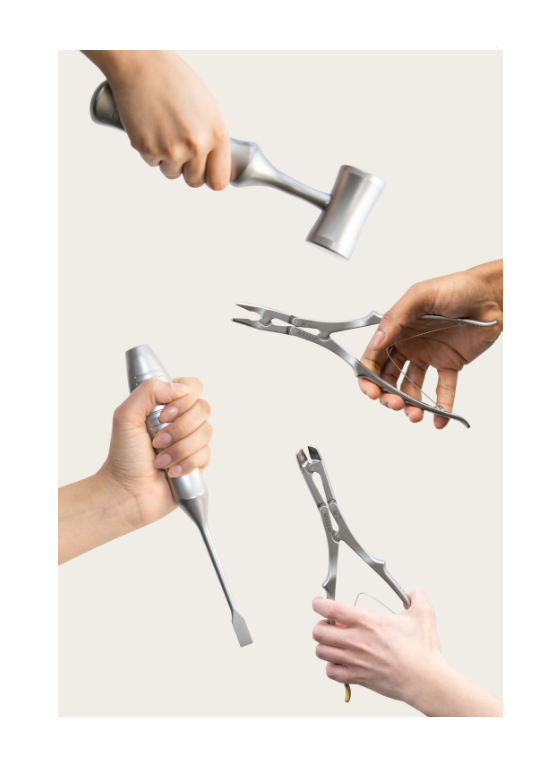
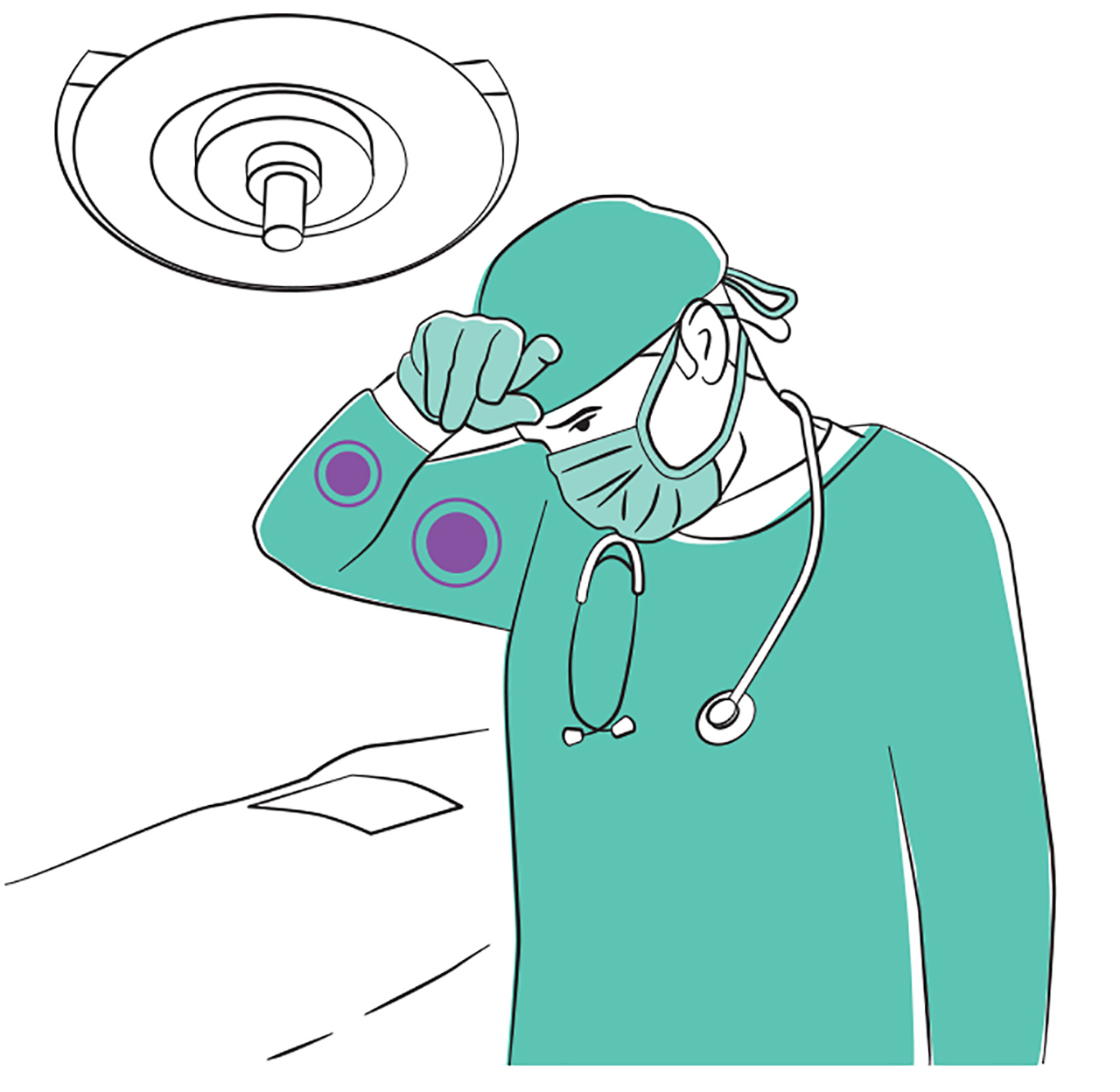
Surgeons’ muscles can be tired after working all day in physically demanding orthopaedic theatres.
We also understand the issue of musculoskeletal pain in surgery (1,2,3,4) and how this can often be underreported (5,6).
Thoroughly tested with surgeons, SQ.line® instruments help address these concerns, they’re proven to provide ergonomic working with reduced pressure points and joint stress. They offer user-friendly weight and balance, improved grip and require less force allowing more comfortable handling.
Ergonomically designed instruments reduce pressure points and joint stress, so that the risk of related injuries is minimized.

The unique, award-winning design provides 70% more grip in comparison to previous products due to shape, material, edges and texture.
The result: Less force to achieve a more secure grip during use.
White Paper - Handle double action forceps_feel the grip PDF – Download
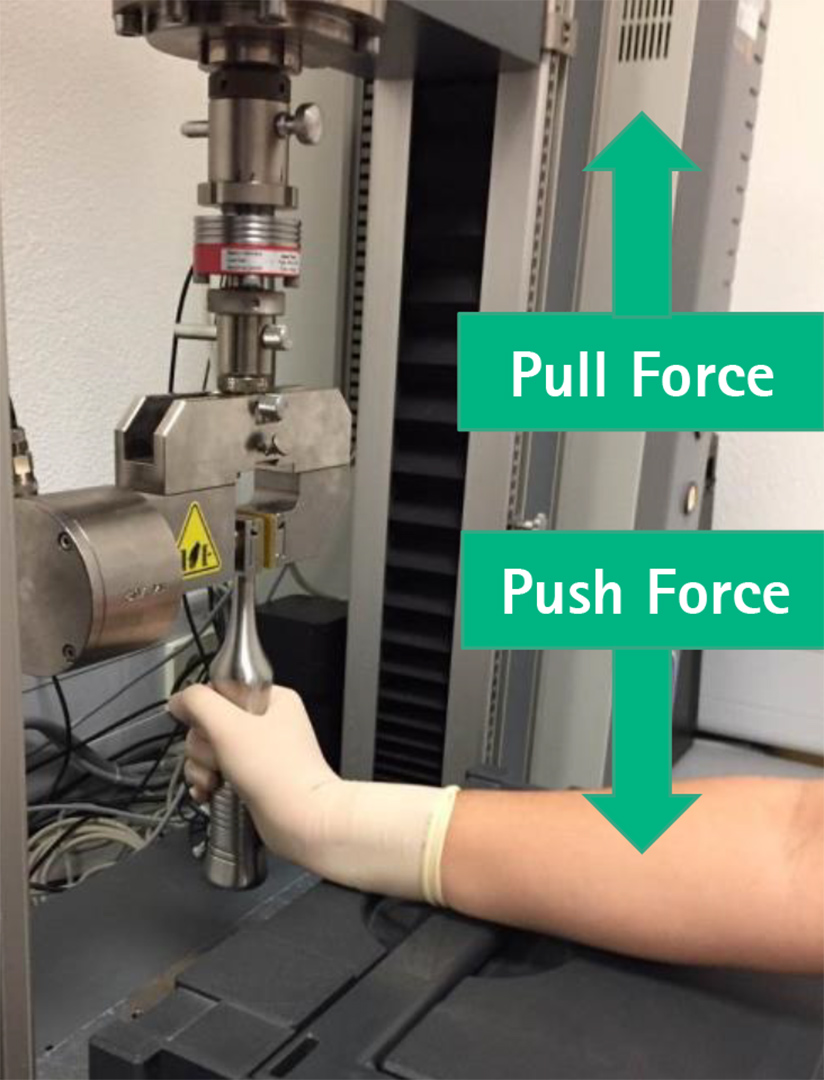
25 % less force is needed to cut through wires compared to previous products, as a result of optimised power transmission of the wire cutting forceps.
White Paper - Wire cutting forceps-one step ahead – Download
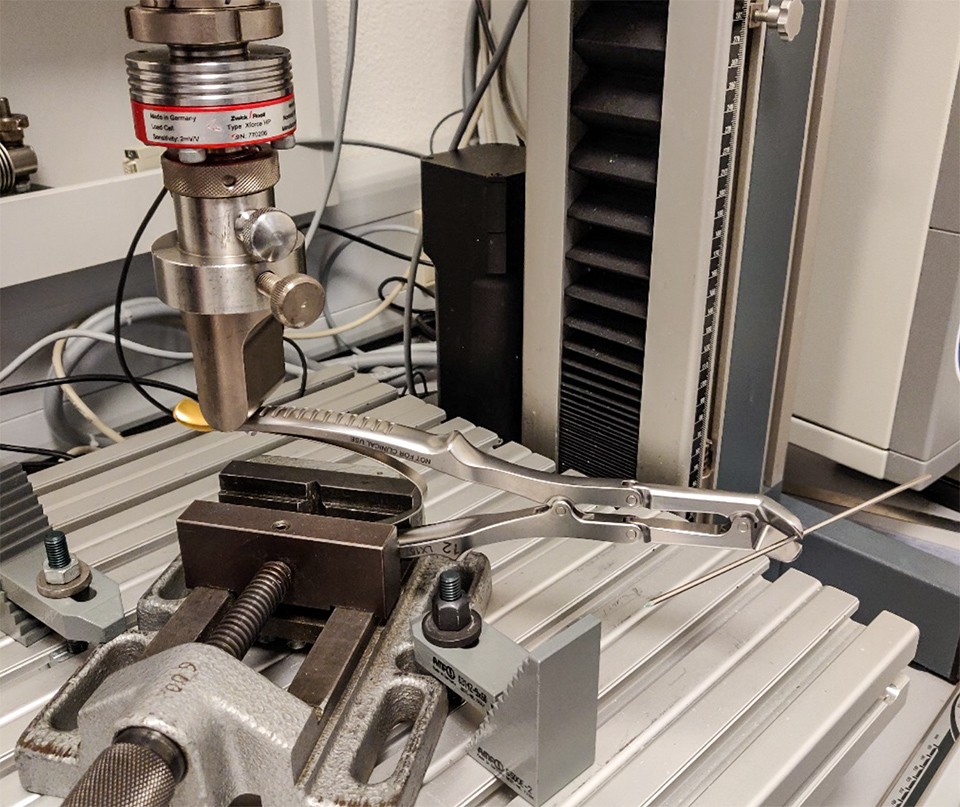
One-piece spring mechanism means there is no risk of screws loosening or accidental opening of the spring during use.

User-friendly weight and balance for smoother handling of the instrument.

A cadaver workshop was performed to test the usability and function of SQ.line® instruments. Orthopaedic surgeons simulated different scenarios in hip surgery. Read the results and feedback from 136 customers across 8 countries with their feedback on the ergonomic design compared to other competitors.
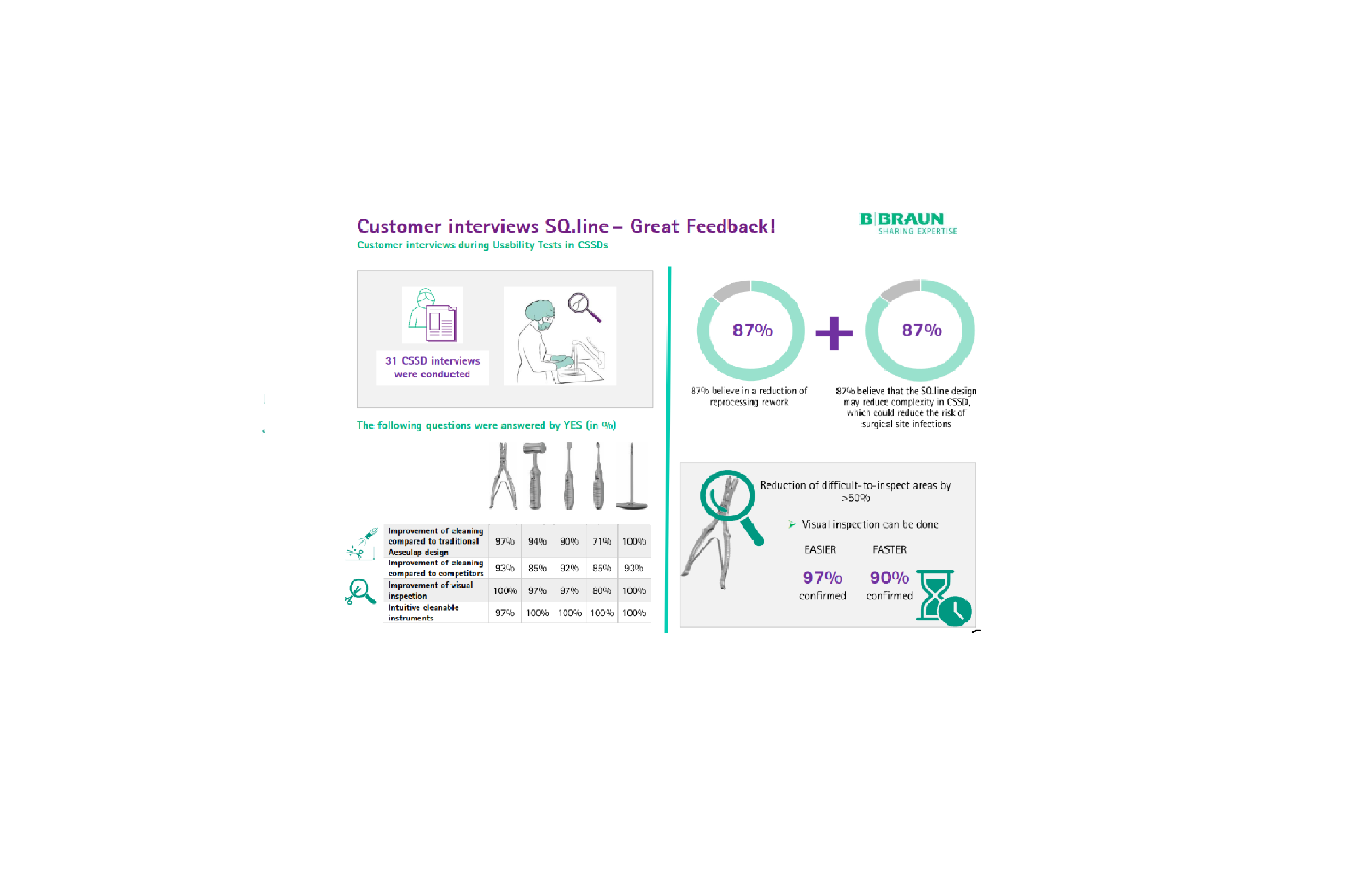
Female surgeons report more difficulty handling instruments than their male counterparts with research showing that female surgeons need more ergonomic instruments to operate safely and effectively (7,8).
SQ.line®’s user-friendly weight and balance offers smoother handling of the instruments and a more ergonomic design than competitor products. Customer Interviews white paper.
Orthopaedic surgeons report high levels of musculoskeletal pain from performing surgery. Orthopaedic surgical instruments are attributed to these physical symptoms with surgeons claiming that common instruments are difficult or uncomfortable to use (2,7).
Evidence suggests that occupational musculoskeletal injury can cause missed work days and can have an impact on surgical care for patients whilst surgeons recover from injury (9).
SQ.line® offers ergonomically designed instruments that reduce pressure points and joint stress and require less force during use.
The new SQ.line® instruments allow improved ergonomic working for different hand sizes with reduced pressure points and joint stress. Evidenced benefits also include wire cutters which use 25% less force, and mallets which provide 70% more grip and offer improved weight balance when compared to previous products.
Combining Aesculap quality and functionality with enhanced comfort and performance SQ.line® heralds a new generation of user-centric instrument design.
Instrument design can add complexity to reprocessing work – instruments with non-observable joints and narrow gaps make inspection difficult and increase cleaning time. Indequately reprocessed instruments also lead to rework, delays and increased stress.
SQ.line® instruments require less manual pre-cleaning and so CSSDs can save time. Careful cleaning of these instruments is now more simple and effective, manual pre-cleaning steps can be eliminated with fully machine-cleanable instruments, resulting in time savings of up to 12 minutes in handling time.
Easier and quicker visual inspection is possible with SQ.line® with difficult-to-inspect areas reduced by more than 50%.
Complications in the reprocessing of surgical instruments can also contribute to Surgical Site Infections (SSI) cases (10). 87% of our interviewed customers believe that the SQ.line® design may reduce complexity in CSSD, which could reduce the risk of surgical site infections.
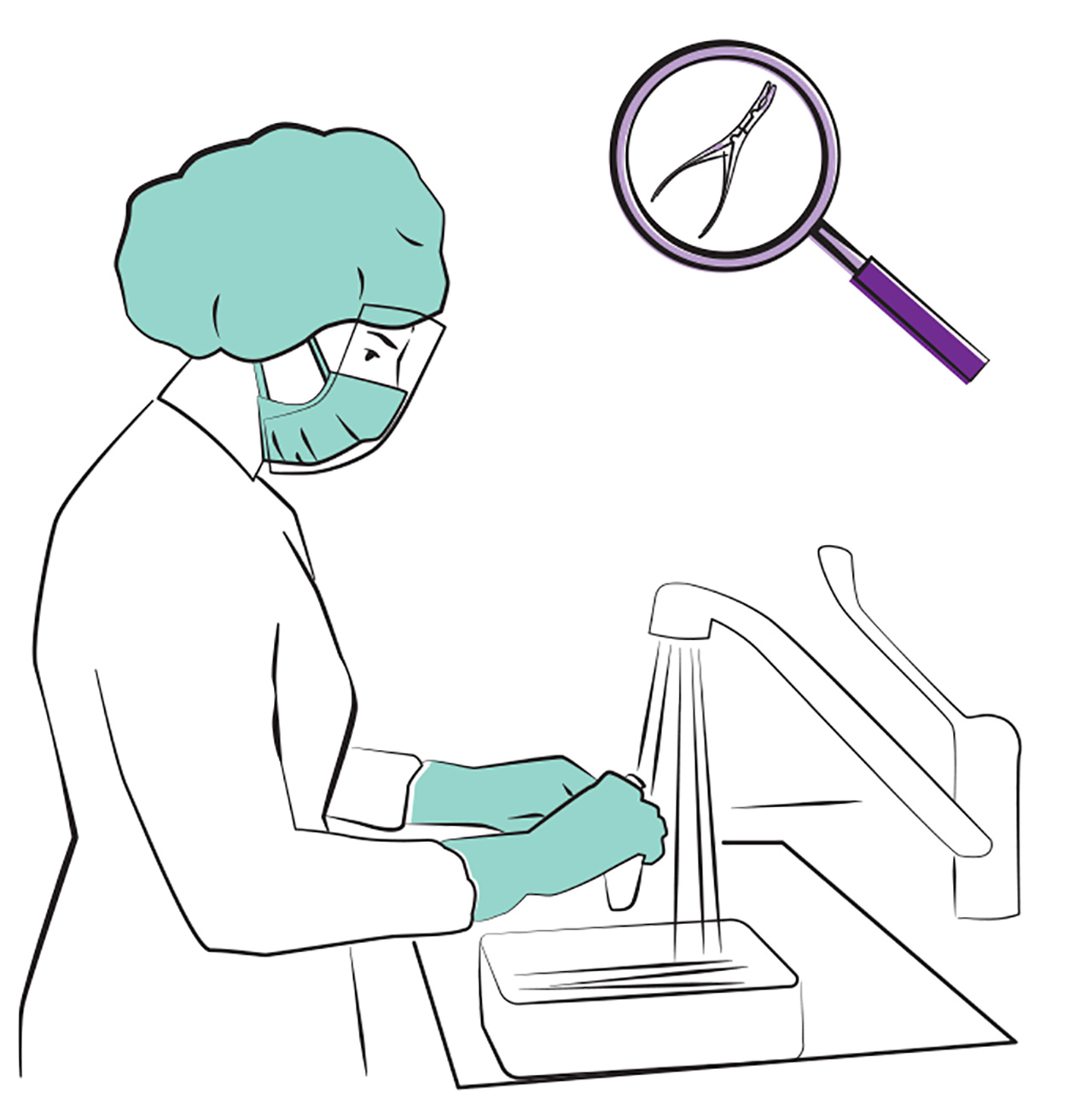
>50% reduction in difficult-to-inspect areas means visual inspection is faster and easier.*
White Paper – Overview customer interviews - SQ.line PDF – Download
*SQ.line bone rongeur was compared with the previous product


Manual pre-cleaning steps can be eliminated with fully machine-cleanable instruments, resulting in time savings up to 12 minutes in handling time.
White Paper - Double action instruments - easy to clean design PDF – Download
Interchangeable jaws open up more possibilities for repair, which could reduce the number of repair replacement procurements, and could therefore also reduce the costs.

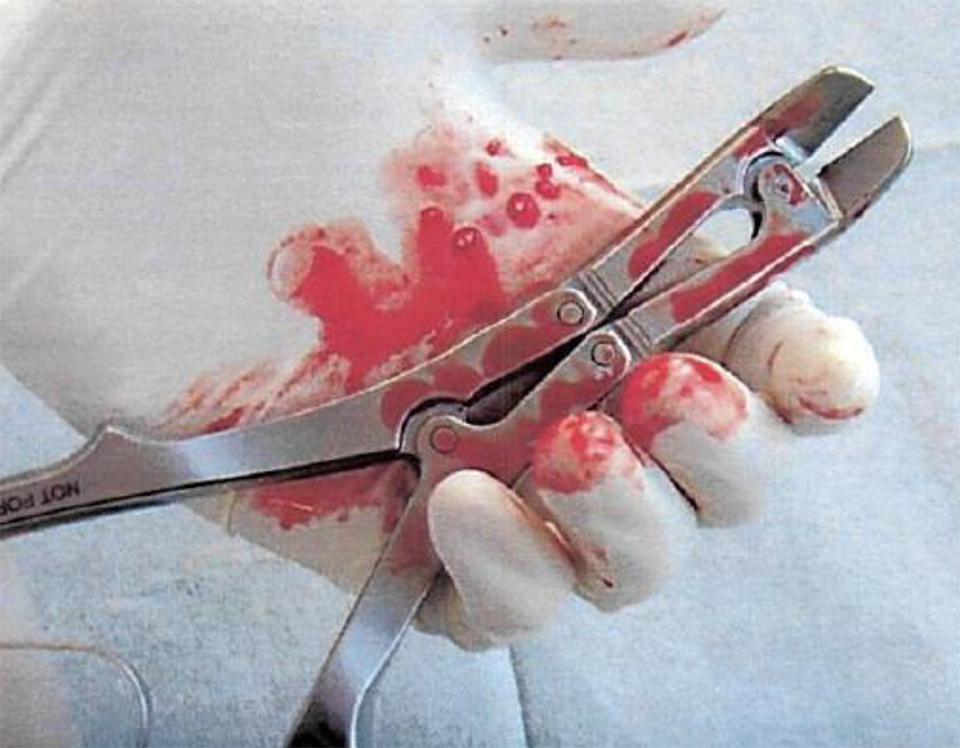
The limit of protein residues is reached at an earlier stage during cleaning and disinfection compared to current instrument designs. Probability of reprocessing rework is reduced.
White Paper - Double action instruments - Protein test1 PDF – Download
All instruments are made entirely from stainless steel. Without critical interfaces to other materials they are less vulnerable and easier to clean.


31 CSSDs were interviewed during usability tests of SQ.line®. The results showed that 87% of those asked, believed that the ergonomic SQ.line® design may help to reduce complexity in CSSD, which could reduce the risk of surgical site infections. Take a look at the results here.
1) Aaron KA, Vaughan J, Gupta R, Ali NE, Beth AH, Moore JM, Ma Y, Ahmad I, Jackler RK, Vaisbuch Y. The risk of ergonomic injury across surgical specialties.PLoS One. 2021 Feb 9;16(2):e0244868. doi: 10.1371/journal.pone.0244868. PMID: 33561117; PMCID: PMC7872272.
2) McQuivey, Kade S. MD; Deckey, David G. MD; Christopher, Zachary K. MD; Rosenow, Christian S. BS; Mi, Lanyu MS; Spangehl, Mark J. MD; Bingham, Joshua S. MD. Surgical Ergonomics and Musculoskeletal Pain in Orthopaedic Surgery Residents: A Multicenter Survey Study. JAAOS: Global Research and Reviews 5(3):e20.00119, March 2021. | DOI: 10.5435/JAAOSGlobal-D-20-00119
3) Chambers, A. & Gill, N. (2020). Work related musculoskeletal pain in general surgical trainees: extent of the problem and strategies for injury prevention. The Bulletin of the Royal College of Surgeons of England. 102:Ss1), pp.2-48.
4) Vijendren A, Yung M, Sanchez J. Occupational health issues amongst UK doctors: a literature review. Occup Med (Lond). 2015 Oct;65(7):519-28. doi: 10.1093/occmed/kqv088. Epub 2015 Jul 14. PMID: 26175495.
5) Soueid A, Oudit D, Thiagarajah S, Laitung G. The pain of surgery: pain experienced by surgeons while operating. Int J Surg. 2010;8(2):118-20. doi: 10.1016/j.ijsu.2009.11.008. Epub 2009 Nov 24. PMID: 19944192.
6) Victor J. Davila, Andrew J. Meltzer, M. Susan Hallbeck, William M. Stone, Samuel R. Money. Physical discomfort, professional satisfaction, and burnout in vascular surgeons. Journal of Vascular Surgery. Volume 70, Issue 3 (2019) 913-920.e2. Available from: https://doi.org/10.1016/j.jvs.2018.11.026.
7) Fram B, Bishop M E, Beredjiklian P, et al. (May 11, 2021) Female Sex is Associated With Increased Reported Injury Rates and Difficulties With Use of Orthopedic Surgical Instruments. Cureus 13(5): e14952. doi:10.7759/cureus.14952
8) Bellini MI, Amabile MI, Saullo P, Zorzetti N, Testini M, Caronna R, D'Andrea V. A Woman's Place Is in Theatre, but Are Theatres Designed with Women in Mind? A Systematic Review of Ergonomics for Women in Surgery. J Clin Med. 2022 Jun 18;11(12):3496. doi: 10.3390/jcm11123496. PMID: 35743578; PMCID: PMC9225169.
9) S.J. Dancer, M. Stewart, C. Coulombe, A. Gregori, M. Virdi. (2012) Surgical site infections linked to contaminated surgical instruments. Journal of Hospital Infection.Volume 81, Issue 4,Pages 231-238. ISSN 0195 701(https://www.sciencedirect.com/science/article/pii/S0195670112001442)